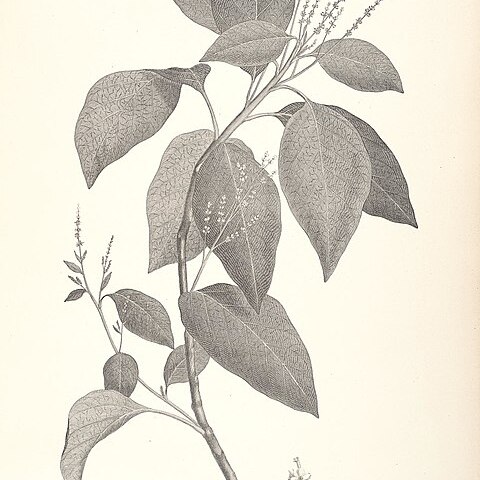Shrub, slender, scrambling, or semi-climber or vine, to 4(–10) m high. Leaves: petiole 10–35 mm long; lamina ovate to elliptic or narrower, (14–)22–130(–160) mm long, (6–)10–65(–85) mm wide, acute to acuminate, rarely subacute, with base cuneate, hairier on lower surface than above. Inflorescence a panicle, terminal and axillary, (18–)40–130(–170) mm long; peduncle (5) 10–40 mm long; bract ovate or broader, 0.6–1.1 mm long, subacute to obtuse, glabrous; bracteoles broadly ovate, 0.6–1(–1.3) mm long, subacute to obtuse, glabrous, rarely with hairy base. Flowers functionally unisexual, single to three (4) together; pedicel 0–0.5 (–1) mm long. Tepals broadly oblong to ovate, 1.0–2.0 mm long, obtuse. Style 0–0.5 mm long; stigma (2-or) 3-fid. Fruit 2–3 mm across, pink to scarlet. Seeds 1 or 2, reniform, 0.8–1(–1.25) mm long, papillate.

